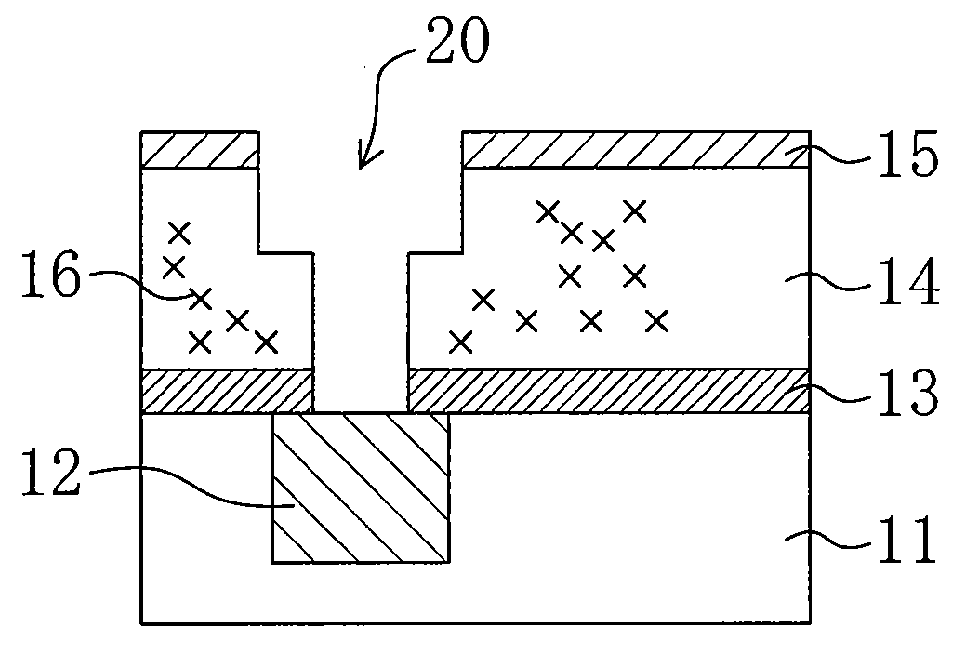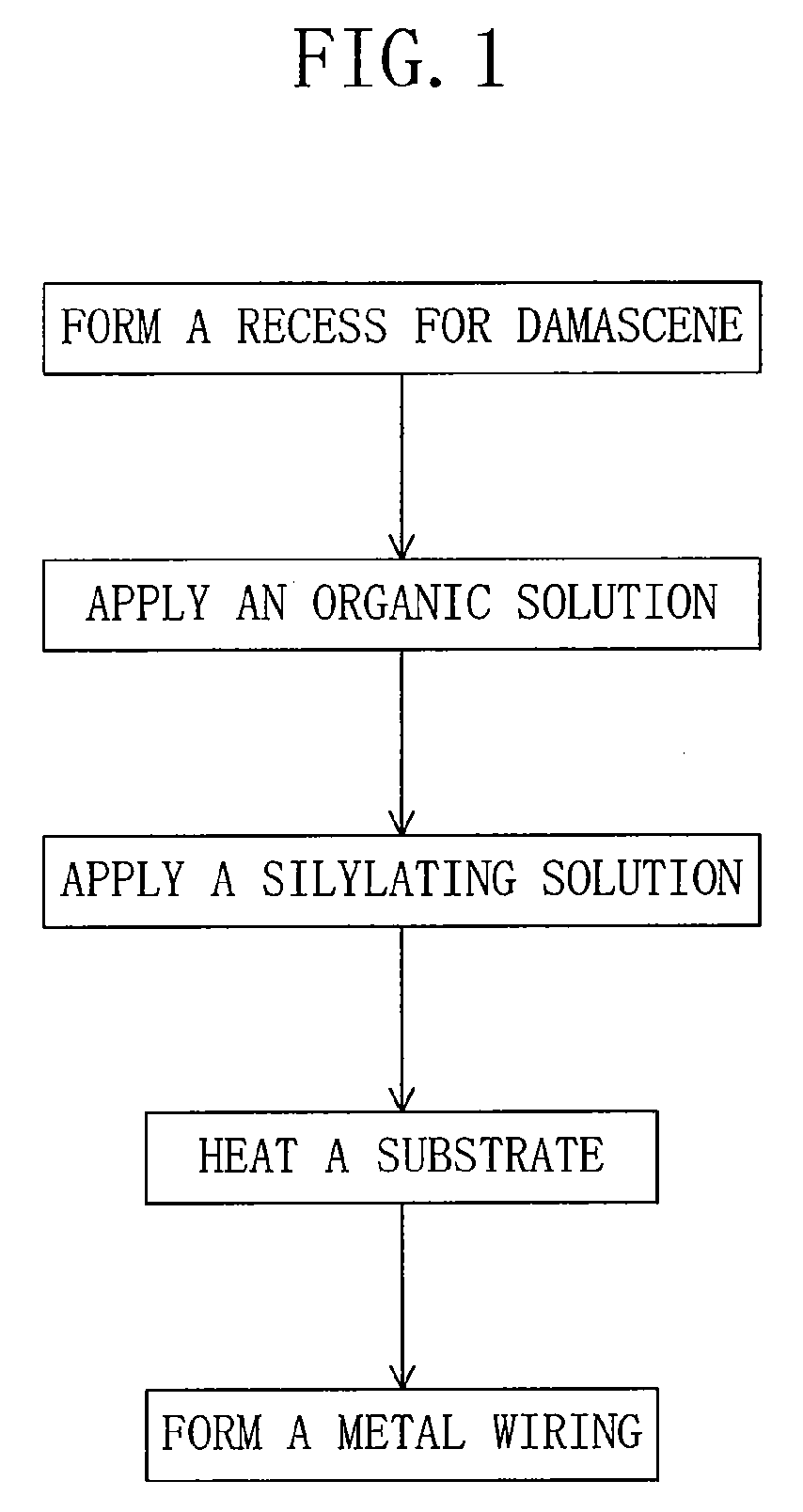Method for manufacturing a semiconductor device
a manufacturing method and technology for semiconductor devices, applied in semiconductor/solid-state device manufacturing, basic electric elements, electric devices, etc., can solve the problems of inability to supply silylating agent further into the pores, and inability to completely repair damage in the pores of the film, etc., to achieve suppressed wiring resistance and insulating film capacity, excellent capability, and high speed
- Summary
- Abstract
- Description
- Claims
- Application Information
AI Technical Summary
Benefits of technology
Problems solved by technology
Method used
Image
Examples
first embodiment
[0053]Hereinafter, a method for manufacturing a semiconductor device according to a first embodiment of the present invention will be described with reference to the figures. FIG. 1 shows a process sequence according to the method for manufacturing a semiconductor device according to the first embodiment. FIGS. 2A through 2F are diagrams illustrating the method for manufacturing a semiconductor device according to the first embodiment. In the first embodiment, description is given to the case where a multilayer wiring structure made of, for example, Cu is formed by using a dual damascene method.
[0054]First, as shown in FIGS. 1 and 2A, an interlayer insulating film 11 having a wiring groove is formed over a semiconductor substrate (not shown) having required semiconductor elements formed thereon. The interlayer insulating film 11 is made of, for example, an NSG (Non Silicate Glass) film which is a thermal oxide film. A lower wiring 12 of, for example, Cu is formed by embedding Cu in ...
second embodiment
[0082]Hereinafter, a method for manufacturing a semiconductor device according to a second embodiment of the present invention will be described. FIGS. 6A and 6B are diagrams illustrating the method for manufacturing a semiconductor device according to the second embodiment. In the second embodiment, description will be given to the case where a multilayer wiring structure made of Cu or the like is formed by using a single damascene method. Only the differences from the first embodiment will be described herein briefly.
[0083]As shown in FIG. 6A, an interlayer insulating film 11 made of, for example, an NSG film, is formed over a semiconductor substrate (not shown) having required semiconductor elements formed thereon. A lower wiring 12 made of Cu or the like is then formed in the interlayer insulating film 11. An etching stopper film 13 and a first low dielectric constant film 14a are then sequentially formed over the lower wiring 12 and the interlayer insulating film 11. A cap film...
third embodiment
[0089]Hereinafter, a method for manufacturing a semiconductor device according to a third embodiment of the present invention will be described. FIG. 7 shows a process sequence according to the manufacturing method of the semiconductor device of the third embodiment. In the third embodiment, a porous SiOC film is used as an example.
[0090]As shown in FIG. 7, a low dielectric constant insulating film (low dielectric constant film) is first formed on a semiconductor substrate having required semiconductor elements formed thereon. The low dielectric constant film is then reformed (UV cure or EB cure) by applying UV beams or electron beams (EB) to the semiconductor substrate while heating the semiconductor substrate. Although this reforming process increases the mechanical strength of the low dielectric constant film, film damages are generated in the low dielectric constant film. These film damages are dangling bonds, Si—H, and Si—OH formed at terminal ends of the low dielectric constan...
PUM
| Property | Measurement | Unit |
|---|---|---|
| dielectric constant | aaaaa | aaaaa |
| dielectric constant | aaaaa | aaaaa |
| dielectric constant | aaaaa | aaaaa |
Abstract
Description
Claims
Application Information
 Login to View More
Login to View More - R&D
- Intellectual Property
- Life Sciences
- Materials
- Tech Scout
- Unparalleled Data Quality
- Higher Quality Content
- 60% Fewer Hallucinations
Browse by: Latest US Patents, China's latest patents, Technical Efficacy Thesaurus, Application Domain, Technology Topic, Popular Technical Reports.
© 2025 PatSnap. All rights reserved.Legal|Privacy policy|Modern Slavery Act Transparency Statement|Sitemap|About US| Contact US: help@patsnap.com



